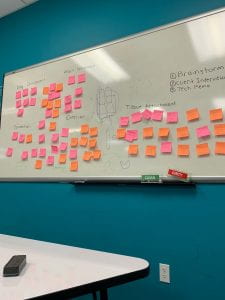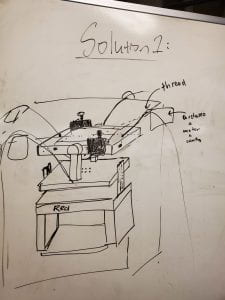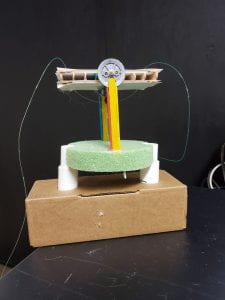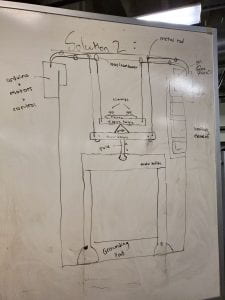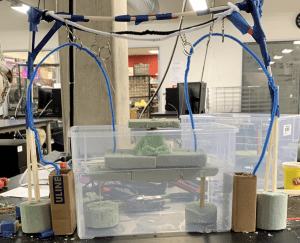Hello again everyone!
This past week has definitely been a week of twists and turns for our team that really showed the value of getting consistent feedback from your clients. Ending out the week, we had determined and defined our design criteria (cost, ease of set-up, ease of maintenance, durability, and accuracy of motion), as well as completed our first round of brainstorming for each of our four device components:
- The heart motion
- The lung motion
- The tissue attachment mechanism
- The motor and Arduino housing component
- The exterior-interior connection
However, during our client meeting on Friday with the Texas Heart Institute (THI) team, we found that many of the solutions and mechanisms that we had brainstormed were not fully aligned with some of the design constraints. Namely, the fact that the tissue could not be impaired in any manner following our device’s use. We had previously made the assumption that the tissue could be punctured in order to attach it to the ’tissue’ table. This assumption proved problematic due to the fact that following the tissue interfacing with our device, it will need to undergo further analysis that would be negatively impacted if there were any holes or tears in the tissue. As a result of this newfound constraint, we headed back to the drawing board. It was fortunate that this concern was found before any significant prototyping had been done, and we still had a lot of time.
In this round of brainstorming, we made some alterations to the component designations for which we were brainstorming. For example, due to the highly integrated nature of the heart and lung motion, we decided to define and brainstorm these mechanisms as one component. We also got rid of the connection between the exterior and interior components in brainstorming, as the feasibility of each was heavily dependent on the heart and lung motion chosen.
Following our second round of brainstorming, we performed a morphology chart of the brainstormed components to create several holistic solutions. We subsequently narrowed down these holistic solutions to two final solutions using a Pugh Scoring Matrix. We then sketched out and built a low fidelity model of each of these solutions to get a better idea of what each would entail and possible future challenges.
Solution 1: Our tissue table (table on which the tissue will be clamped) is built on an axle that has a string running through both ends of the platform that will facilitate a rocking (heart) motion. This axle is constructed then onto a second platform that is attached to a set of tracks. When pulled by a string, these tracks will assist in mimicking vertical (lung) motion.
Solution 2: The tissue table (table on which the tissue will be clamped) is a small platform that is located on top of a triangle. This table has strings attached at each end that would facilitate a rocking (heart) motion when pulled. The mechanism here is similar to that seen in a seesaw. Meanwhile, the middle platform is attached to the stationary table by a pole that is running through the center with strings being used again to this time create a vertical (lung) motion.
*Note: The vertical motion seeks to mimic the heart’s motion that is caused by the lung.
Moving forward into next week, we plan to develop a higher fidelity version of each prototype and perform some additional iterations. Based on the findings of our low fidelity prototype, it seems that it might end up being best to combine the best aspects of each solution into one final one. Additionally, we plan to use SolidWorks to 3D print some of our components, write Arduino code in a manner that allows for independent control of the heart and lung motion, and hopefully bring our device to life!
Signing off,
Kaitlyn
